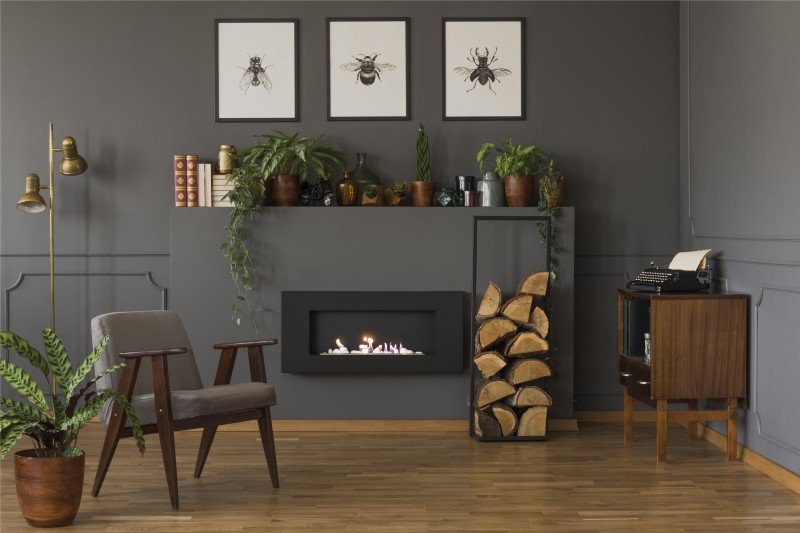It's Time To Forget Small Fireplaces: 10 Reasons Why You Don't Need It
A Comprehensive Guide to Small Fireplaces: Efficient Heating and Cozy Living
In an era where energy efficiency and space optimization are ending up being increasingly important, small fireplaces have emerged as an appealing option to traditional, bulky hearths. Best Fireplace use heat and a focal point for any space, increasing both comfort and aesthetic appeal. This short article checks out the various types of small fireplaces, their benefits, setup considerations, and upkeep tips, eventually helping homeowners make informed decisions when considering these lovely heating options.
Comprehending Small Fireplaces
Small fireplaces provide a range of styles, consisting of electric, gas, ethanol, and wood-burning models. Each type provides distinct benefits and style possibilities, making them suitable for various living areas.
Kinds Of Small Fireplaces
Fireplace Type
Description
Pros
Cons
Electric
Utilizes electrical energy to generate heat. Provides lots of styles, consisting of wall-mounted and freestanding units.
- Easy to set up
- Low upkeep
- No venting required
- Limited heat output
- May incur greater electricity costs
Gas
Burns gas or gas. Often offered as logs in a traditional fireplace or modern designs.
- Efficient heat output
- Cleaner than wood
- Easy ignition
- Requires gas line setup
- Some units require venting
Ethanol
Burns bioethanol, offering genuine flames without a chimney.
- Eco-friendly
- Portable
- No installation needed
- Limited heat output
- Higher fuel expenses
Wood-Burning
Traditional fireplaces that burn fire wood. Often used in more rustic settings.
- Great heat output
- Rich ambiance
- Can be utilized throughout power interruptions
- Requires a chimney
- Regular upkeep and cleaning
Benefits of Small Fireplaces
- Area Efficiency: Small fireplaces are perfect for apartments, condominiums, and smaller sized homes. They maximize warmth without taking up excessive floor area.
- Affordable Heating: In specific cases, small fireplaces can supplement main heater, lowering overall energy costs while developing a more comfy environment.
- Atmosphere and Aesthetics: They offer a welcoming focal point to a room, developing a cozy atmosphere ideal for relaxation and social events.
- Flexibility: Available in different styles and styles, small fireplaces can complement any decoration, from modern minimalist to rustic traditional.
Installation Considerations
When contemplating a small fireplace, setup is an essential aspect that can impact the choice of model. Below are useful factors to consider:
- Local Regulations: Building codes can vary by place; always inspect local guidelines before installation.
- Ventilation Needs: Depending on the type, small fireplaces may need various ventilation systems. Gas fireplaces may require venting outdoors, while electric models do not.
- Power Source: Electric models require proximity to electrical outlets, while gas and ethanol models might need a gas line or fuel storage.
- Weight and Structure: Installing wall-mounted systems may require strengthened wall locations, whereas free-standing designs are much easier to move.
Upkeep Tips
Like any other home device, small fireplaces require regular maintenance to function successfully and safely. Here are important upkeep tips for various fireplace types:
For Electric Fireplaces:
- Cleaning: Wipe down the system with a soft fabric to eliminate dust and keep the heater ducts clear.
- Examination: Check the power cable routinely for any damages or signs of wear.
For Gas Fireplaces:
- Annual Inspections: Schedule yearly examinations by a professional to ensure safe gas circulation.
- Tidy the Logs: Regularly clean the burner and logs to preserve optimal efficiency.
For Ethanol Fireplaces:
- Fuel Storage: Store ethanol fuel safely far from direct sunshine and heat sources.
- Regular Cleaning: Clean the burner after each usage to maintain performance and prevent soot buildup.
For Wood-Burning Fireplaces:
- Chimney Sweeping: Have the chimney professionally cleaned once a year to avoid creosote accumulation.
- Firewood Storage: Only use dry, seasoned wood to lessen smoke and promote effective burning.
Regularly Asked Questions
1. Can I install a small fireplace myself?
While some electric and ethanol fireplaces are fairly easy to set up, it is suggested to employ a professional for gas and wood-burning systems to ensure compliance with regional building regulations.
2. Just how much does it cost to run a small fireplace?
The cost will vary depending upon the kind of fireplace. Normally, electric fireplaces may sustain higher electricity costs, while wood-burning options can draw from renewable firewood supplies.
3. Do I require a permit for installation?
Permits are normally needed for gas and wood-burning fireplaces due to their setup complexity and security guidelines. Constantly consult regional authorities.
4. How long can I run an electric fireplace?
Most electric fireplaces can run for extended periods; however, it's recommended to follow manufacturer guidelines to avoid getting too hot or harming the unit.
5. What kind of small fireplace is best for a small space?
This mostly depends on individual needs. Electric models are versatile and easy to set up, while gas and ethanol choices supply genuine flames with efficient heat output.
Small fireplaces represent a practical and trendy alternative for those seeking effective heating services in compact home. With numerous types readily available, house owners can select models that line up with their visual choices and area requirements. By understanding the setup processes and routine maintenance required, people can take pleasure in the comfort and ambiance that small fireplaces provide for years to come. Whether for a cozy night at home or an inviting space for events, small fireplaces are an enduring element of modern and traditional design alike.
